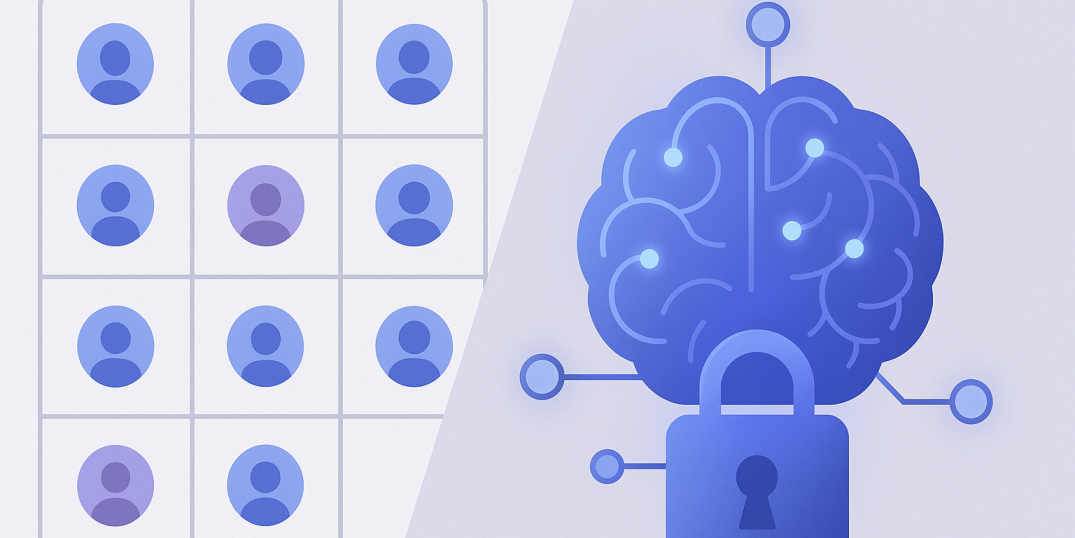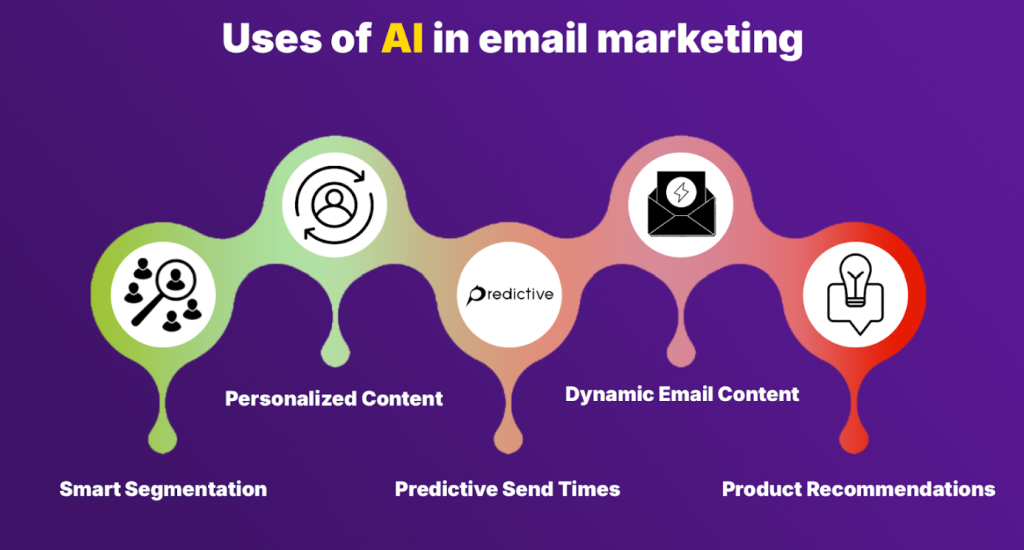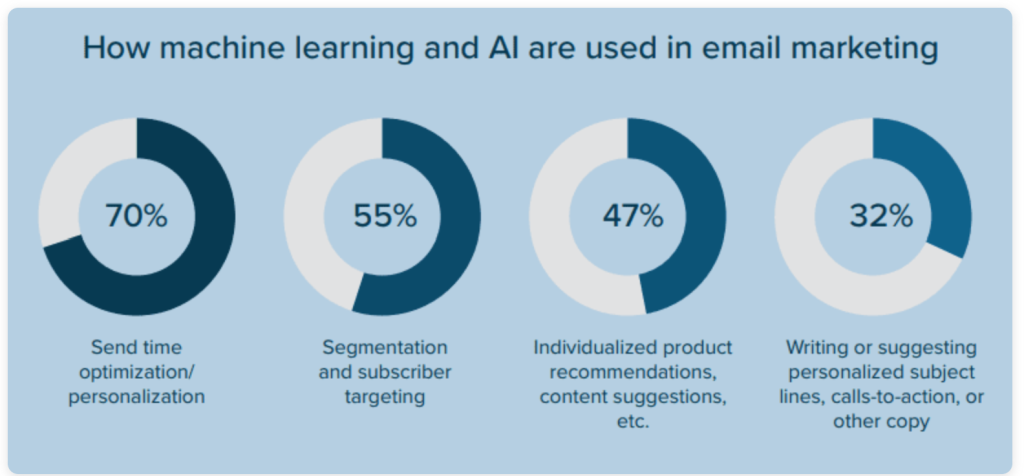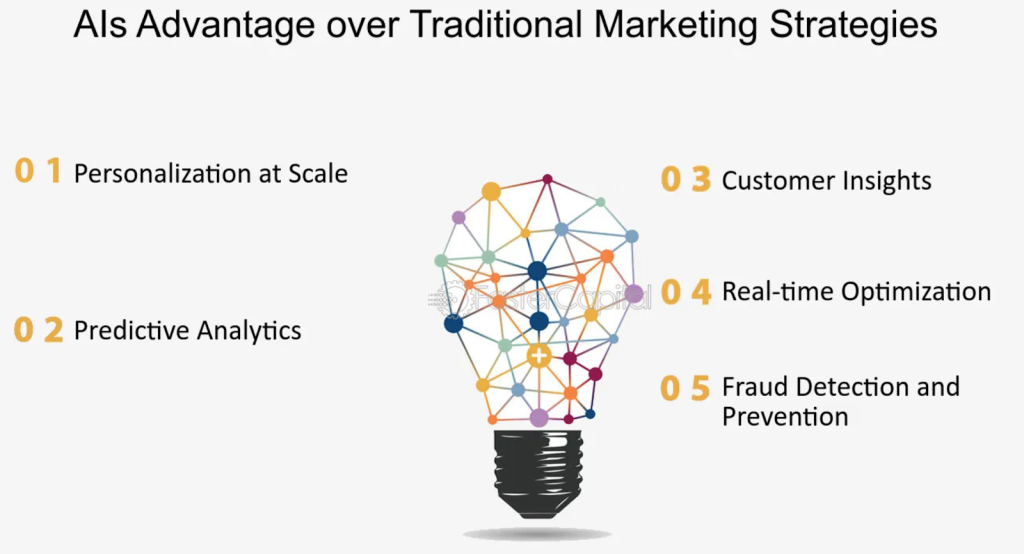- Home
- Fundamentals of Email Marketing
- How Predictive AI Is Replacing ...

No two subscribers are exactly alike. Yet for years, email marketers have been grouping people by broad traits like demographics or purchase history—and sending one-size-fits-all messages to each group. This rules-based approach, born from 1990s direct marketing tactics like RFM (recency, frequency, monetary value) segmentation, was better than nothing. In the end, it ensured campaigns were somewhat relevant to each segment. But today this might not be enough anymore.
Why? Because the digital world generates a constant abundance of behavioral data that old segmentation methods can’t fully exploit. Traditional segments are static snapshots. Often they are backward-looking and limited to known customer data. They don’t adapt to each customer’s latest actions or context, leaving big blind spots. Meanwhile, predictive AI is capable of harnessing vast streams of engagement data, continuously learning from them and personalizing marketing down to the individual level.
So, what is predictive AI? In this article, we are going to talk exactly about that. But also about why it’s attracting so much attention in email marketing and how it differs from traditional segmentation. We’ll also explore how predictive AI works in practice, the benefits it brings, and the challenges marketers need to keep in mind.
What Is Predictive AI in Email Marketing?
Predictive AI in email marketing refers to using AI-driven analytics and machine learning models to forecast customer behavior and automate personalized messaging. In other words, predictive AI crunches your users’ data to predict what each person is likely to do next. These predictions serve as a basis for further refined personalization.
Predictive AI has made it possible to shift the focus from marketing to groups toward marketing to individuals. Traditional segmentation groups people into broad clusters and delivers a generic message to each of them. Predictive AI, by contrast, applies behavioral targeting by treating each customer as a segment of one, adjusting email content and send times based on their unique patterns of behavior.
Predictive AI in action — how does it work?
To illustrate, imagine a customer is scrolling through your website’s FAQ on returns and refunds. In a traditional segmentation model, that customer might simply belong to a broad “recent shoppers” segment and get whatever generic newsletter goes out next. But a predictive AI model will flag this behavior in real time as a churn indicator. It means the user could be losing confidence or considering a return. Immediately, AI takes action: it might trigger an automated email offering a personalized incentive or assistance (e.g., “Having second thoughts? Enjoy 20% off your next purchase or chat with our support team—we’re here to help!”). All of this happens without a marketer manually pulling a list. What happened is that AI has effectively predicted an intent (potential churn) and created a timely response to prevent losing the customer.

Limitations of Traditional Segmentation
Traditional email segmentation served marketers well for a long time, but compared to AI predictive analysis, it has serious limitations. To understand why more and more teams are moving beyond traditional segmentation, let’s analyze why it can hardly compete with AI in marketing:
⚠️ One-dimensional focus: Classic segmentation is often one-dimensional, relying on a few basic criteria (like demographic traits or signup date) to split the audience. This narrow view means many nuances are lost. For example, a rule-based segment might target all customers in New York who joined in the last month with the same welcome email. In reality, those customers have diverse behaviors and interests, but segmentation doesn’t account for that. Legacy techniques like RFM use primarily historical transaction data and ignore other signals, so they won’t reflect a customer’s current interests or browsing intent.
⚠️ Labor-intensive: Maintaining segments requires work. Hard manual work. For marketers, it means constantly creating and adjusting rules. These rules might look like: “IF customer spends > $50 and last purchase < 30 days, THEN segment as VIP”—and update lists as behaviors change. Every new campaign might require building new segments or refining old ones. And as your business grows, the number of segments can explode—and each of them requires attention.
⚠️ Blind spots: Perhaps the biggest issue is that static segments have blind spots—they can’t account for real-time behavior or shifting intent. Segmentation is inherently reactive: it looks at past data to categorize customers. But what if a customer suddenly exhibits a new behavior outside of what their segment would predict? Say, a usually dormant subscriber starts browsing new products this week—a static segment might still classify them as “inactive” and miss this buying intent. As a result, it might lead to the loss of a customer, as their current shopping behavior is not considered.The bottom line here: while segmentation groups people based on previous behaviors, AI learns individuals from their current actions. Next, we’ll see how predictive AI works inside modern email marketing tools.

How Predictive AI Works in Email Marketing Platforms
Now, let’s look at how predictive AI works. Below are a few fundamental aspects that differentiate predictive AI from segmentation and make it so attractive in comparison:
💎 Machine learning models on customer data: At the core of predictive AI are ML models trained on your customer lifecycle and engagement data. AI combs through all the behavioral data (structured and unstructured) and uses statistical models to forecast future actions. To find patterns, AI takes in everything—past email interactions, website browsing activity, purchase history, support chats, and more. For example, it might learn that a segment of users always open emails on weekends, or that customers who viewed product X twice tend to buy related product Y. These models assign predictive scores to each user based on the patterns detected.
💎 Continuous learning and adaptation: Unlike a static segmentation rule that’s set once until it is changed, predictive AI models are continuously learning. Every new interaction a customer has—opening an email, ignoring it, browsing a new category, making a purchase—feeds back into the model. AI updates its understanding of that customer in real time and adjusts its predictions accordingly. This means the system is always adapting to new behavior and each send becomes smarter than the last, as the model incorporates the latest data.
💎 Integration with CRM, ESP, and e-commerce data: Predictive AI is most powerful when plugged into all your key data sources. Modern AI marketing tools can easily integrate with your CRM, email service provider, e-commerce platform, and other databases. Most AI-powered email platforms are designed to work with your existing systems and data streams, not replace them. This means setup is often quick, and AI can immediately start utilizing your full range of customer information.
A few examples of AI marketing tools that offer predictive analytics and AI email automation are:
⭐ Salesforce Einstein: Provides predictive engagement scores and send-time optimization, helping marketers deliver emails at the right moment for each individual.
⭐ Klaviyo Predictive Analytics: Forecasts customer behavior like next purchase or lifetime value, enabling automated flows for churn prevention and upsell campaigns.
⭐ Mailchimp AI Tools: Offers AI-powered subject line suggestions, send-time optimization, and predictive segmentation to make personalization accessible for small businesses.
Other platforms with predictive AI features include HubSpot, Iterable, ActiveCampaign, Emarsys, and Oracle Responsys.
Use Cases — What Replaces Segmentation?
👉 Predictive product recommendations: Rather than grouping subscribers into broad product-interest segments, AI can predict the specific products each individual is most likely to buy and recommend those. The content of an email becomes dynamically generated for each user. If user A might get an email highlighting gaming accessories because their browsing and purchase history suggest an interest in that area, user B (in the same segment) sees a completely different recommendation more aligned with their tastes. In fact, AI-driven content recommendations have been shown to boost engagement and sales by tailoring suggestions to each shopper.
👉 Dynamic send-time optimization: Marketers often used to segment audiences by engagement timing (like separating “morning people” vs. “night owls”) to schedule emails. Predictive AI obsoletes that guesswork by calculating the optimal send time for each individual subscriber automatically. AI looks at when each person has historically opened emails (it even considers time zones and recent activity) to determine the precise delivery window when that user is most likely to engage. This dynamic per-user send-time optimization consistently outperforms static scheduling. As AI figures out the best time for each person, the era of Tuesday at 10am being “the best time for everyone” is coming to an end.
👉 Churn prediction & retention emails: Instead of waiting for customers to fall into a “dormant 90+ days” segment to try re-engagement, predictive AI can proactively predict churn on an individual basis and trigger retention tactics right away. The model might analyze signals like declining email opens, reduced website visits, or customer service interactions to assign a churn risk score to each customer. If the score crosses a threshold—indicating this person is likely to disengage or unsubscribe soon—the system automatically sends a retention email (or series of emails). This way, you are able to address potential churn before the customer stops being active.
👉 Upsell and next-best offer triggers: While segmentation has long been used for upselling, predictive AI takes this to the next level. It does so by modeling each customer’s propensity for various products or upgrades and then triggers upsell emails at the right moment. More than that, AI might consider a user’s entire journey and profile to determine what they’re likely to want next. For example, after a purchase, one customer might get an upsell for a premium plan upgrade because their usage data signals they’re outgrowing the basic plan, whereas another customer who bought the same item gets a recommendation for complementary accessories instead.

Benefits of Predictive AI Over Traditional Segmentation
💎 Real-time personalization at scale: Predictive AI enables true one-to-one personalization on a massive scale, in real time. This is a level of personalization that segmentation could never achieve. Dynamic content powered by AI makes sure that each person gets a message suited to them at that moment, not just a generic email for their segment. It results in emails that feel hand-crafted for millions of customers simultaneously. Essentially, predictive AI gives you the ability to treat every subscriber as if they’re your only subscriber—something that’s only possible through automation and machine learning.
💎 Higher engagement and conversion rates: Better personalization and timing directly translate to better performance metrics. Companies that have adopted predictive AI for email targeting are seeing higher open rates, click-through rates, and more conversions compared to traditional campaigns. By sending the right content at the right time to the right person, you naturally increase the likelihood they’ll engage. Some businesses have even reported dramatic uplifts—for instance, case studies show up to a 29% increase in open rates and 41% more clicks after implementing AI personalization strategies.
💎 Reduction in manual marketing labor: One of the less glamorous but hugely impactful benefits of AI is how much time and effort it can save your team. All that busywork of managing segments, scheduling sends, A/B testing every little detail can be automated or accelerated by AI. This reduction in manual labor means your team can focus on strategy, creative, and other high-level tasks. The Salesforce 2025 report on AI in marketing highlighted reduced manual effort as a key benefit of using AI in email campaigns.
💎 Smarter use of behavioral data: Traditional segmentation often relies on marketer assumptions and simplistic rules—essentially educated guesses about what might appeal to a group. Predictive AI turns this around by letting data speak for itself. It finds non-obvious patterns and correlations in customer behavior that humans might miss, leading to more insightful targeting. By using real behavioral signals (not just static attributes), AI models make decisions based on evidence rather than gut instinct. This means your marketing becomes more data-driven and objective. It can even uncover new customer segments or preferences that were hidden under the old segmentation approach.
Challenges and Considerations
With all its promise, implementing predictive AI in email marketing isn’t without challenges. Marketers need to be mindful of a few important considerations to ensure success and stay compliant with ethics and regulations:
⚠️ Data quality and quantity: Predictive AI relies on large volumes of clean, accurate data. If your inputs are fragmented or messy, results will be poor—a classic garbage in, garbage out problem. In fact, 61% of companies worry about inaccurate data undermining their AI personalization efforts. Investing in consolidated, reliable tracking is critical before expecting strong outcomes.
⚠️ Privacy, transparency, and compliance: AI-driven personalization uses sensitive behavioral data, which makes compliance with GDPR, CCPA, and similar regulations non-negotiable. Transparency builds trust: customers are more comfortable when they understand why they’re receiving certain emails. Marketers should prioritize first-party data, clear consent, and explainable AI to avoid crossing into the “creepy” zone.
⚠️ Black box models and oversight: Many predictive AI systems lack explainability, making it hard to justify decisions or spot errors. That’s why human oversight and guardrails remain essential—from capping email frequency to reviewing unusual targeting patterns. Treat AI as an assistant, not an oracle, and regularly audit outputs to ensure they align with business goals and ethical standards.
To Sum Up
Predictive AI is rapidly emerging as the smarter, more effective way to target and personalize email marketing. Marketers who have embraced AI predictive analytics in their email strategy are seeing higher engagement rates, better conversions, and less time spent working with spreadsheets.
That said, the transition to predictive AI doesn’t happen overnight. It requires the right data foundation, the right tools, and a thoughtful approach to privacy and model management. The good news is that modern platforms are making these capabilities more plug-and-play, so you don’t need a PhD in data science to apply them.
As we move forward, it’s clear that those who pair their marketing creativity with the analytic power of predictive AI will be the ones to build deeper customer relationships and see more impressive results than with the use of traditional segmentation.



